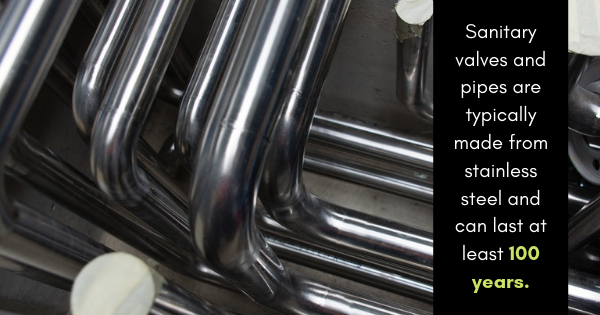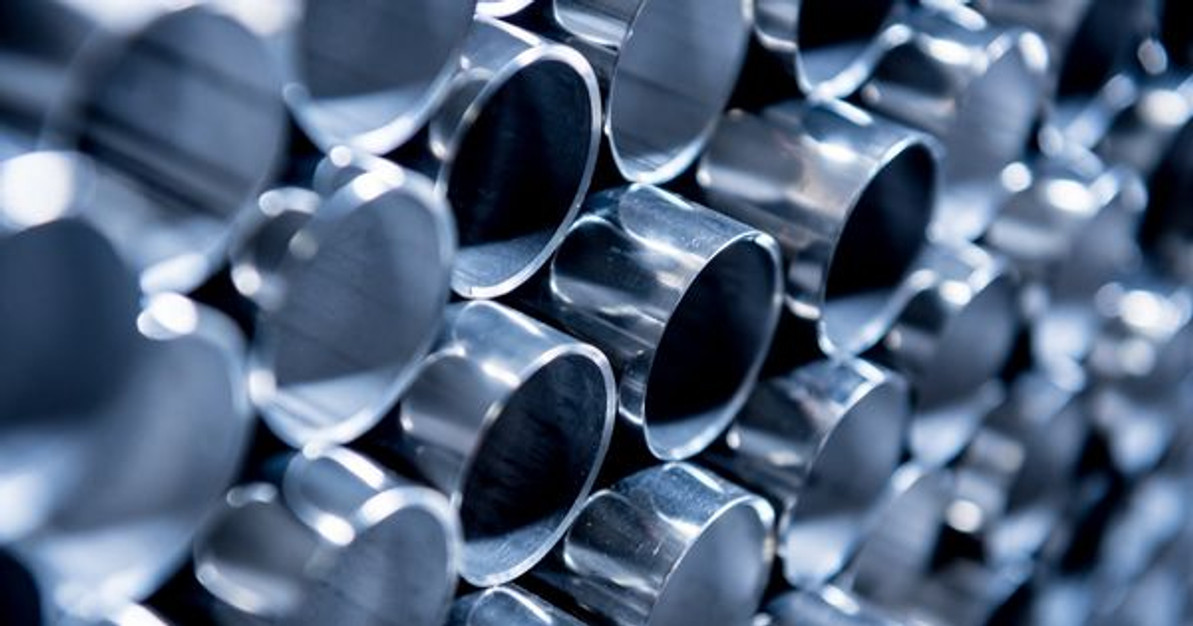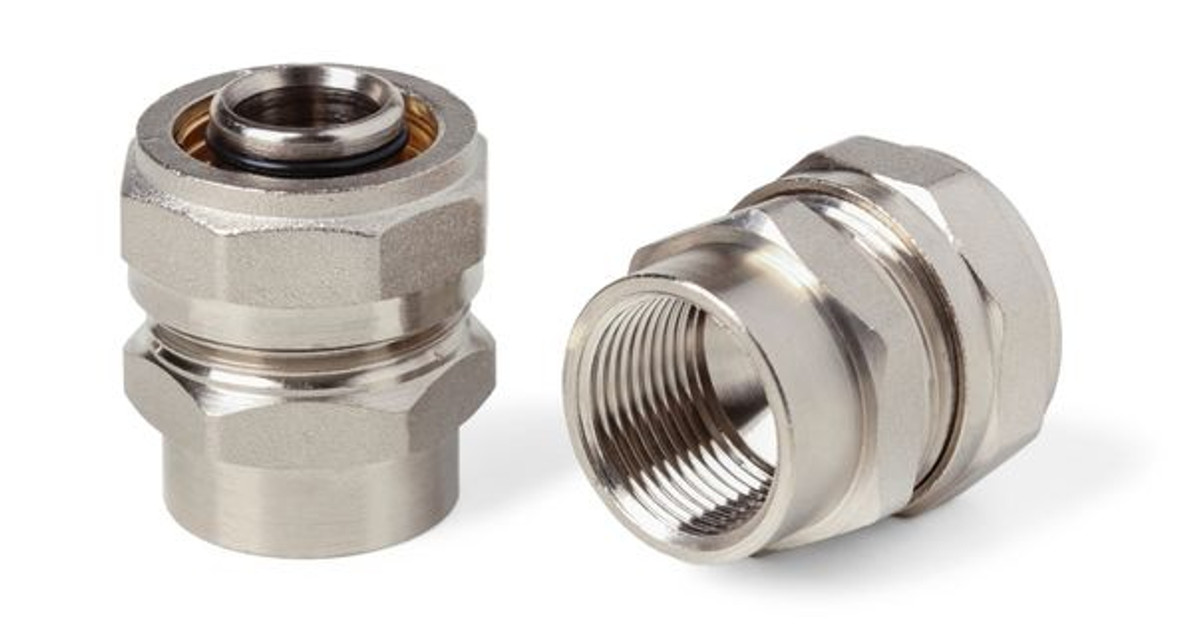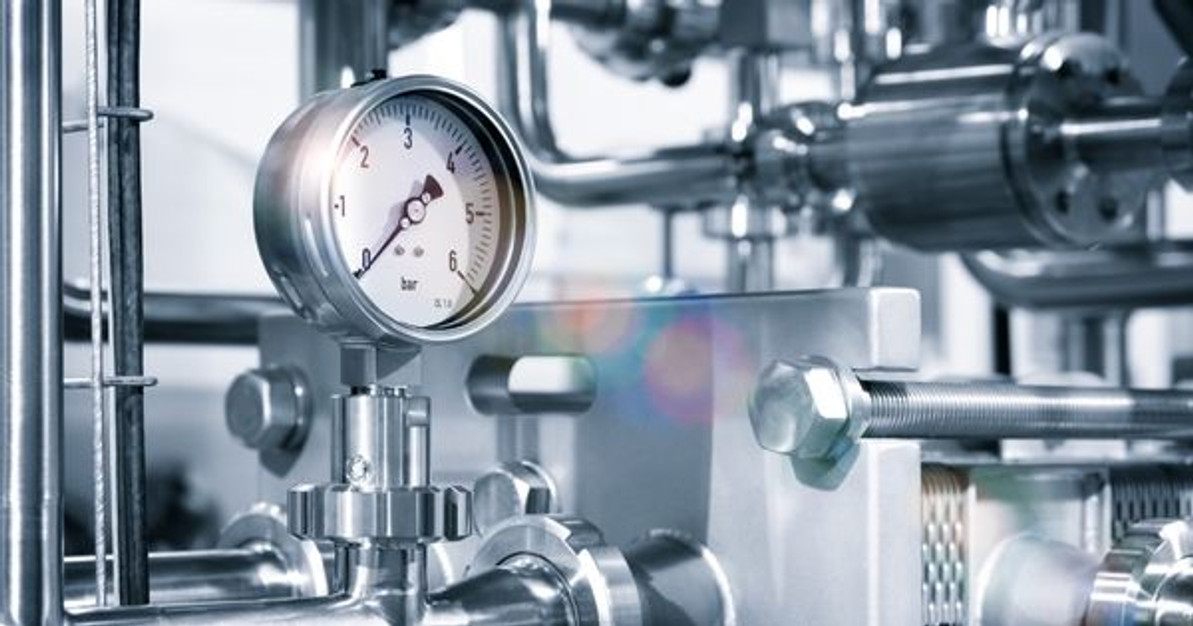 Oct 17th 2019
Oct 17th 20195 Types of Valves and Their Characteristics

Food and beverage production is part art and part science. Once you have created an excellent product, you have to engineer the production facilities and machinery to bring it to the public at an acceptable cost. This is where the engineers and technicians take over. But what are the various sanitary valves available and what are their properties? Sanitary valves and pipes are typically made from stainless steel and can last at least 100 years -- if they are installed and maintained properly. Here is an overview of the valves used to control fluid flow in a food or beverage production system:
Sanitary Butterfly Valve
A sanitary butterfly valve is an in-line valve that includes a flat disk centered in a pipe and connected to an actuator. The actuator pivots the disk about its central axis. When the surface of the disk is parallel to the flow, the valve is open and fluid can flow through the pipe. When the surface of the disk is perpendicular to the flow, the disk blocks the pipe, stopping fluid flow. The disk may be partially opened to throttle flow.
One advantage of sanitary butterfly valves is that they are relatively simple to operate - a quarter turn opens or closes the valve. Moreover, because of their relatively uncomplicated construction, sanitary butterfly valves are easy to install and inexpensive to replace. The disadvantages of sanitary butterfly valves are:
- Even when open, the disk obstructs flow and causes pressure drops
- Because the disk rests in the passage, the pipes cannot be pigged and must be flushed
- Debris trapped between the disk and valve seat can wear the valve seat and allow leakage, making sanitary butterfly valves unsuitable for slurries or flows with suspended solids
- Hydraulic force on the surface of the disk from fluid flow can make it difficult to open and close
Sanitary Ball Valve
A sanitary ball valve is also an in-line valve that includes a spherical ball with a passageway through it. When an actuator rotates the ball so that the passageway is aligned with the pipe, the sanitary ball valve is open and fluid can flow through the passageway. When the actuator is rotated a quarter turn, the passageway is rotated out of alignment with the pipe and the solid part of the ball obstructs the fluid flow.
Sanitary ball valves resolve some of the drawbacks of sanitary butterfly valves since the passageway is unobstructed when the valve is open. Moreover, they are easily and inexpensively constructed by the sanitary ball valves manufacturer. Two disadvantages of the sanitary ball valve are that the ball traps fluid within the ball when closed and throttling is difficult with a ball valve.
Sanitary Check Valve
A sanitary check valve uses a stopper connected to a spring to keep the stopper in a normally closed position. When the pressure on the stopper is sufficient to overcome the force of the spring, the stopper moves away from its seat to allow fluid to flow. When the pressure drops, the spring automatically closes the valve.
Check valves are primarily used to prevent reverse flow and ensure that any mixing occurs downstream rather than upstream of the check valve. Check valves are also used to build pressure so that any fluid delivered is delivered at the opening pressure of the check valve.
Sanitary Diaphragm Valve
A sanitary diaphragm valve includes a valve body through which the fluid flows. A diaphragm is positioned in the valve body and is moved into and out of the fluid flow by a valve actuator. When closed, the actuator holds the diaphragm in a saddle or seat.
Sanitary diaphragm valves have many advantages in the food and beverage production industry. Because the diaphragm and seat can seal around the flow, sanitary diaphragm valves are suited for slurries and fluids with suspended solids. Moreover, the displacement of the diaphragm can be controlled by the actuator, making sanitary diaphragm valves one of the best-suited valves for throttling flow.
Sanitary Plug Valve
Sanitary plug valves are similar in construction and operation to ball valves, but uses cylindrical or conical plugs rather than spherical balls to occlude the flow. Because of their similarities, sanitary plug valves have the same benefits and drawbacks as sanitary ball valves.
Knowing the properties and purposes of the various types of valves will help you select the right valve for your specific application.
 Oct 17th 2019
Oct 17th 2019Recent Posts
-
Nov 7th 2022
What Is Food-Grade Stainless Steel Tubing?
Businesses that produce food and beverage products must operate hygienically. Sterile environments a …Nov 7th 2022
-
Oct 11th 2022
Why Sanitary Fittings Are Important for the Medical Industry
Sanitary fittings are useful for many industries. Food and beverage manufacturers have used these to …Oct 11th 2022
-
Sep 23rd 2022
What Is the Max Operating Temperature for Stainless Steel?
Stainless steel is valued in many industrial applications because it’s capable of withstanding high …Sep 23rd 2022



